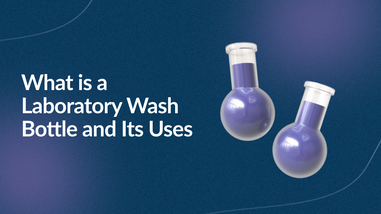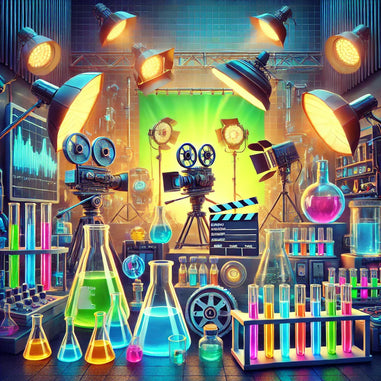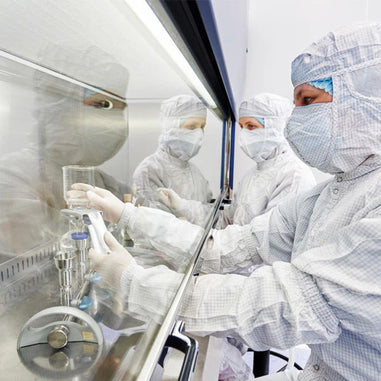- No products in the cart.
What Is Chemical Exposure?
We are exposed to chemicals on a daily basis such as in food, water, clothes, and everyday products. Chemicals are everywhere in our environment and we are constantly in contact with them. The key is to determine which chemicals in our environment are harmful and which are not.
Chemical exposure is defined as the amount of or frequency a substance comes into contact with a person or the environment. This exposure is either through direct contact or indirect which would be through another source contaminated with the chemical. People come into contact with hazardous chemicals either by inhalation, ingestion, or skin contact.
Science Labs And Hazardous Chemicals
Science labs are one such environment where hazardous materials are used, handled, or stored. That’s why eating, drinking, chewing gum, smoking, taking medication or applying makeup or contact lenses should never take place in a lab where teaching or research involving toxic substances is a common practice.

Storing food and beverages in refrigerators or chemical cabinets where hazardous chemicals are present can result in contamination. Even food, beverages, candy, or chewing gum just sitting out in a lab or passing through can become contaminated sources by exposure to hazardous chemicals. Smoking or the use of tobacco products is another pathway to contamination. All of these items have the potential to absorb the chemical vapor which in turn contaminates the food, drinks, candy, chewing gum, or smoking devices. Then those in the lab ingest or inhale these items and the human body has become chemically exposed.
The same can be said about applying cosmetics, lip balm, or hand lotion in the lab. Cosmetic products have the potential to absorb vapor from the hazardous chemical and then when it is applied, the chemicals are absorbed through contact with the skin. The application of contact lenses can create the same scenario. Again, people end up chemically exposed through their skin or eyes.
Regulations And Compliance
To prevent the accidental ingestion of, inhalation, or contact with hazardous materials in a lab setting, regulations and guidelines have been set by the Nuclear Regulatory Commission (NRC), the Center for Disease Control and Prevention (CDC), Prudent Practices in the Laboratory (PPL), and the Occupational Safety and Health Administration (OSHA). These guidelines prohibit these activities in labs where hazardous chemicals are present as a way to eliminate these routes of exposure.
Here are some things to keep in mind while working in a lab to meet bloodborne pathogen standards, sanitation standards, and general lab standards:
- Do not eat in areas where hazardous chemicals are used, handled, or stored.
- Do not drink in areas where toxic chemicals are used, handled, or stored.
- Water sources in the lab should not be used as drinking water.
- Do not consume beverages or food in a lab restroom.
- Do not store food, beverages, gum, candy or anything that can be ingested where hazardous materials are present in the lab.
- Do not store food or drink in freezers, refrigerators, shelves, countertops, cabinets, or benchtops where blood or infectious materials are present.
- Do not chew gum in areas where hazardous chemicals are used, handled, or stored.
- Rinsing of beverage or food containers is permissible in designated lab sinks only if no other sinks are available and if the sink is not contaminated with hazardous materials.
- Do not store food containers, beverage containers, drinking cups, or utensils in the lab.
- Food containers, beverage containers, drinking cups, or utensils may not be dried on drying racks within the lab.
- Do not place food waste, containers, wrappers in lab trash cans as this appears to be consumption of food or beverages within the lab.
- Do not apply cosmetics in areas where hazardous chemicals are used, handled, or stored.
- Smoking or the use of tobacco products are not permitted where hazardous materials are used, handled, or stored.
- Always wash hands thoroughly after handling any chemicals or lab material even if wearing gloves and before eating and drinking.
- Always wear appropriate protective equipment when working with hazardous materials such as gloves, eye protection, pants that are ankle length, lab coats, and shoes with the toes closed.
Designated Area
While eating, drinking, and related activities are not allowed in the lab, there should be a designated area where these activities are permitted. The designated area should consist of a room with floor to ceiling walls with a door that closes and the room should be separated from the lab.
If the designated area can only be accessed by walking through the lab, then food and beverage items must be covered while passing through. Travel mugs with lids can also be used for transport. You may not eat or drink even when just passing through the lab.
Refrigerators in the designated area should store food and beverages only and be labeled as such. The label should also include the fact that no hazardous materials are allowed.
Eating, drinking or storage of these activities within labs where research or teaching involving toxic substances take place can result in the accidental ingestion of hazardous chemicals. Some chemical exposure is known to have short term and long term effects on the body. That’s why government agencies along with others have established regulations and guidelines to keep those who work in a lab setting safe.
Lab Pro offers a large variety of lab supplies and equipment. For over 40 years, Lab Pro Inc. has been committed to delivering the highest quality chemicals, lab equipment, distance learning kits, lab supplies, and cleanroom PPE apparel to medical device companies and laboratories worldwide. To learn more, visit the biggest Lab Supply showroom in California, or contact us online or at 888-452-2776.












































